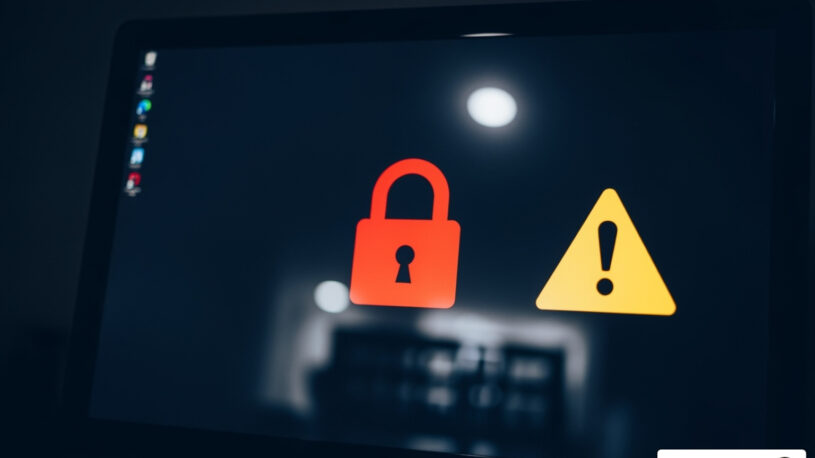

Austin HIPAA Compliance: How Legal Practices Stay Protected
The Health Insurance Portability and Accountability Act (HIPAA) is crucial for legal practices as it protects protected health information (PHI). For many firms, achieving Austin HIPAA compliance is a core part of safeguarding client confidentiality, especially when handling sensitive medical records.
HIPAA compliance is not just a regulatory requirement; it’s critical for effective management of PHI. Failure to comply can result in severe penalties, including fines and damage to reputation. Law firms must grasp the complexities of HIPAA in Austin to minimize risks associated with handling PHI.
This article serves as a checklist for legal practices on ensuring HIPAA compliance. It includes actionable steps for law firms, covering the essentials from cybersecurity in Austin to secure record keeping.
- Staff training and awareness
- Risk assessments and management
- Data protection measures
- Incident response plans
- Documentation and record keeping
By implementing these guidelines, legal practices can navigate the challenges of HIPAA compliance while reaffirming their dedication to protecting client information.
Understanding HIPAA and Its Relevance to Legal Practices
HIPAA is a federal law established in 1996. Its primary objectives are:
- Protecting Patient Privacy: Ensures confidentiality of PHI.
- Facilitating Data Portability: Allows individuals to maintain health insurance coverage as they change jobs.
- Establishing Security Standards: Mandates safeguards for the electronic transmission and storage of PHI.
Under HIPAA, covered entities include healthcare providers, health plans, and healthcare clearinghouses that create, receive, maintain, or transmit PHI. Legal professionals often find themselves in the role of business associates, handling PHI on behalf of these covered entities.
Legal practices may access medical records for various cases, including personal injury claims or healthcare litigation. As business associates, lawyers must adhere to HIPAA regulations while managing PHI, ensuring it remains confidential and secure. This obligation underscores the importance of compliance within legal practices, as failure to uphold these standards can lead to severe penalties and reputational damage.
Core Components of HIPAA Regulations
HIPAA comprises four primary rules that collectively ensure the confidentiality and security of PHI. Understanding these rules is vital for legal practices managing sensitive health data.
1. Privacy Rule
Establishes standards for the protection of PHI, granting patients’ rights over their information while defining permissible uses and disclosures. Legal professionals must secure consent before sharing PHI, ensuring patient confidentiality at all times.
2. Security Rule
Focuses on safeguarding electronic PHI (ePHI) through administrative, physical, and technical safeguards. This rule mandates implementing measures such as encryption and access controls to protect ePHI from unauthorized access or breaches.
3. Breach Notification Rule
Requires covered entities to notify affected individuals and regulatory bodies in the event of a breach of unsecured PHI. Compliance with this rule is critical as it outlines the steps necessary when a breach occurs, minimizing potential harm to patients.
4. Omnibus Rule
Updates previous regulations by expanding the definition of business associates and imposing stricter accountability measures for them. This rule enhances protections for PHI by clarifying the responsibilities of all parties involved in its management.
Failure to comply with these regulations can lead to severe repercussions, including hefty fines, legal action, and reputational damage for law firms. The stakes are high; maintaining compliance is not just a legal obligation but an ethical imperative.
Compliance Checklist for Law Firms
1. Staff Training and Awareness
Educating staff on HIPAA regulations is critical for legal practices handling PHI. An informed team is the frontline defense against potential breaches of confidentiality. A strong compliance culture within the firm minimizes human error, ensuring that every member understands their role in safeguarding sensitive data.
Key components of an effective training program include:
- Regular Training Sessions: Conduct workshops and seminars to discuss HIPAA requirements and best practices. Regular refreshers help reinforce knowledge and keep staff updated on any regulatory changes.
- Role-Specific Training: Tailor training to specific roles within the firm. For instance, front-office personnel may require different insights compared to attorneys handling sensitive cases.
- Interactive Learning Tools: Utilize online courses and interactive modules that engage employees while imparting essential information about HIPAA compliance.
- Resource Availability: Make training materials readily accessible through an internal portal or shared drive. This allows staff to refer back to guidelines as needed.
Several tools can enhance compliance training effectiveness:
- Learning Management Systems (LMS): Platforms like PracticePanther or KnowBe4 offer structured programs specifically designed for HIPAA compliance training.
- Simulation Exercises: Create realistic scenarios that challenge employees to respond appropriately to potential breaches. This practical application solidifies learning outcomes.
- Feedback Mechanisms: Implement a system for collecting feedback on training sessions, allowing for continuous improvement of educational offerings.
Incorporating these strategies fosters a proactive approach to compliance, empowering staff with the knowledge required to uphold HIPAA standards effectively. Building a robust compliance culture not only protects sensitive information but also enhances the firm’s reputation and trustworthiness in the eyes of clients and stakeholders.
2. Risk Assessments and Management
Regular risk assessments are essential in identifying weaknesses in the management of PHI. Law firms must prioritize these evaluations as part of their HIPAA compliance checklist to protect sensitive data effectively.
Below are key elements to include in risk assessments:
- Threat Identification: Recognize potential risks that could compromise PHI.
- Vulnerability Analysis: Analyze existing safeguards and determine areas needing improvement.
- Mitigation Strategies: Develop actionable plans to address identified vulnerabilities. This may involve implementing stronger encryption protocols, enhancing access controls, or improving physical security measures.
Establishing a strong compliance culture through continuous staff training reinforces the importance of reducing human error. Regular updates and training sessions ensure that all personnel understand HIPAA requirements and best practices for managing PHI securely. This proactive approach significantly reduces the likelihood of breaches while maintaining compliance with HIPAA regulations.
3. Data Protection Measures
Data protection is a key aspect of HIPAA compliance for law firms. Implementing strong technical safeguards is crucial for protecting PHI. Here are some important measures to consider:
- Encryption: Use encryption protocols to secure sensitive data during transmission and storage. This ensures that even if data is intercepted, it remains unreadable without the corresponding decryption key.
- Secure Storage Solutions: Choose secure storage options such as cloud services with built-in compliance features and physical security measures to protect paper records.
- Access Controls: Limit access to PHI strictly to authorized personnel. Implement strong password policies and multi-factor authentication to enhance security.
- Regular Security Audits: Conduct frequent audits to assess the effectiveness of existing cybersecurity measures, identifying vulnerabilities that require immediate attention.
Implementing these cybersecurity measures not only strengthens data security but also promotes a culture of compliance among staff, significantly reducing human error in handling sensitive health data.
4. Incident Response Plans
Establishing a defined incident response plan is essential for law firms to address potential breaches or violations effectively. A well-structured plan can mitigate risks and ensure compliance with HIPAA requirements.
Key components of an effective incident response plan include:
- Identification: Recognize and classify the nature of the breach.
- Containment: Implement immediate measures to limit the impact on PHI.
- Eradication: Remove the cause of the breach, ensuring vulnerabilities are addressed.
- Recovery: Restore affected systems and data while ensuring normal operations resume securely.
- Notification: Communicate with affected parties as required by the Breach Notification Rule, including informing clients and relevant authorities.
5. Documentation and Record Keeping
Maintaining accurate documentation is essential for HIPAA compliance in legal practices. Precise records of compliance activities and policies regarding the management of PHI help establish accountability and transparency. Key considerations include:
- Retention Period: Documentation must be retained for at least six years from the date of creation or the last effective date.
- Compliance Checklist Elements:
- Policies on PHI access, handling, and sharing.
- Training records that demonstrate staff understanding of HIPAA requirements.
- Incident reports detailing any breaches or violations, along with corrective actions taken.
- Access control logs that track who have accessed PHI, when, and for what purpose.
A strong documentation strategy not only supports adherence to HIPAA requirements but also fosters a compliance culture among staff, minimizing human error through continuous education and awareness.
The Impact of Recent Legal Changes on HIPAA Compliance
Recent Supreme Court rulings, especially the Dobbs v. Jackson Women’s Health Organization case, have had a significant impact on healthcare privacy laws. This ruling has resulted in increased scrutiny of reproductive health information (RHI) within the context of HIPAA regulations.
Key implications include:
- Enhanced Protections for RHI: The decision prompted updates to HIPAA’s Privacy Rule, which now offers specific safeguards for RHI. This includes provisions ensuring confidentiality and secure handling of sensitive reproductive health data.
- State-Level Regulations: With the overturning of federal protections, states can impose their own regulations regarding RHI. Legal practices must navigate this complex landscape while ensuring compliance with varying state laws.
- Increased Compliance Requirements: Law firms handling PHI related to reproductive health must adopt more rigorous compliance measures. This includes updating policies and training programs focused on RHI management.
Tools and Resources for Ensuring Compliance
Legal practices must leverage technology to maintain HIPAA compliance effectively. Several software solutions simplify this process, ensuring that law firms can manage PHI securely.
Software Solutions
- PracticePanther: This comprehensive practice management software is tailored for law firms, offering features that streamline client communication and document management while ensuring compliance with HIPAA regulations. Its secure client portal enables safe sharing of sensitive information.
- Clio: A cloud-based legal practice management software that includes secure storage and communication tools compliant with HIPAA standards.
- MyCase: Offers built-in security features for handling PHI, including encrypted communication channels.
Additional Resources
In addition to software solutions, law firms should consider utilizing resources such as:
- HIPAA training programs: Online courses designed specifically for legal professionals can enhance understanding of compliance requirements.
- Legal support services: Companies like U.S. Legal Support offer specialized medical record retrieval services that adhere to HIPAA guidelines.
Investing in these tools and resources fosters a culture of compliance, ultimately protecting both the firm and its clients from potential violations.
Common Mistakes in HIPAA Compliance for Law Firms
Identifying common HIPAA violations in legal practices is crucial for maintaining compliance. Several frequent mistakes can lead to significant issues:
- Inadequate Staff Training: Failing to provide comprehensive training on HIPAA regulations often results in unintentional breaches. Regular training sessions should be mandated to ensure all employees understand their responsibilities.
- Neglecting Risk Assessments: Many firms overlook the importance of conducting regular risk assessments. These evaluations are essential for identifying vulnerabilities in the management of protected health information (PHI).
- Poor Documentation Practices: Inconsistent record-keeping can hinder compliance efforts. Law firms must maintain precise documentation of all compliance activities, policies, and procedures.
- Insufficient Technical Safeguards: Relying solely on administrative measures without implementing technical safeguards like encryption can expose PHI to cyber threats.
To avoid these pitfalls, law firms should adopt the following strategies:
- Implement Comprehensive Training Programs: Establish ongoing education initiatives that cover HIPAA regulations and promote a culture of compliance.
- Conduct Regular Risk Analyses: Schedule periodic assessments to evaluate potential risks and vulnerabilities related to PHI handling.
- Enhance Documentation Practices: Create standardized templates and protocols for documenting compliance activities and policies.
- Invest in Cybersecurity Tools: Utilize advanced security solutions such as encryption and access control to protect PHI from unauthorized access.
Maintaining Compliance Without Stress or Excessive Costs
Achieving compliance with HIPAA regulations in legal practices does not have to be a burdensome process. Implementing efficient strategies can streamline operations while keeping costs manageable. Consider the following methods:
- Automate Compliance Tasks: Utilize software solutions designed for HIPAA compliance. These platforms can help automate documentation, training schedules, and risk assessments, reducing manual workload and minimizing human error.
- Regular Training Refreshers: Schedule brief, periodic training sessions for staff. Short sessions focused on specific aspects of HIPAA keep employees informed without overwhelming them.
- Leverage Existing Resources: Many professional organizations offer free or low-cost resources tailored for HIPAA compliance. Take advantage of these tools, including webinars, templates, and guidelines.
- Conduct Risk Assessments Efficiently: Streamline risk assessment processes by using checklists or software tools that guide firms through identifying vulnerabilities in PHI management.
- Establish Clear Policies: Develop straightforward policies for PHI handling and ensure they are readily accessible. Clear guidelines reduce confusion and foster adherence among staff.
By integrating these strategies into daily operations, law firms can maintain robust compliance without incurring significant stress or financial burden.
Frequently Asked Questions About HIPAA Compliance
What is HIPAA and why is it important for legal practices?
The Health Insurance Portability and Accountability Act (HIPAA) is a federal law designed to protect the privacy and security of PHI. For legal practices, compliance with HIPAA is crucial as it ensures the safeguarding of sensitive health data while also protecting the firm from potential legal repercussions associated with data breaches.
Who qualifies as a covered entity under HIPAA?
Covered entities under HIPAA include healthcare providers, health plans, and healthcare clearinghouses that transmit any health information in electronic form. Legal professionals may also act as business associates when they handle PHI on behalf of these covered entities.
What are the core components of HIPAA regulations?
HIPAA encompasses several key rules: the Privacy Rule, which governs the use and disclosure of PHI; the Security Rule, which sets standards for safeguarding electronic PHI; the Breach Notification Rule, which requires notification in case of data breaches; and the Omnibus Rule, which strengthens privacy protections. Each rule plays a vital role in ensuring data security and maintaining patient confidentiality.
What should be included in a compliance checklist for law firms?
A comprehensive HIPAA compliance checklist for law firms should include staff training and awareness programs, regular risk assessments to identify vulnerabilities, robust data protection measures like encryption, well-defined incident response plans for breaches, and meticulous documentation and record-keeping practices. These elements help create a culture of compliance within the organization.
How can recent legal changes impact HIPAA compliance?
Recent Supreme Court rulings, such as Dobbs v. Jackson Women’s Health Organization, can influence healthcare privacy laws by altering how reproductive health information (RHI) is protected under HIPAA. Legal practices in need of legal IT in Austin TX solutions must stay informed about these changes to ensure ongoing compliance with updated regulations regarding PHI.
What common pitfalls should law firms avoid maintaining HIPAA compliance?
Common pitfalls that lead to non-compliance include inadequate staff training, failure to perform regular risk assessments, neglecting proper documentation practices, and not having an effective incident response plan. Law firms can avoid these mistakes by implementing comprehensive training programs, conducting frequent audits, maintaining clear records, and ensuring secure Austin data backups are part of their breach preparedness strategies.
Table of Contents









